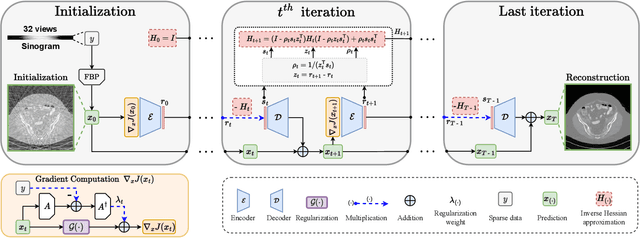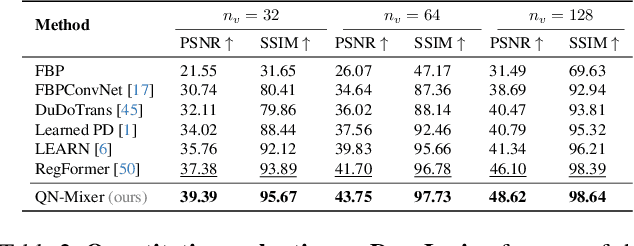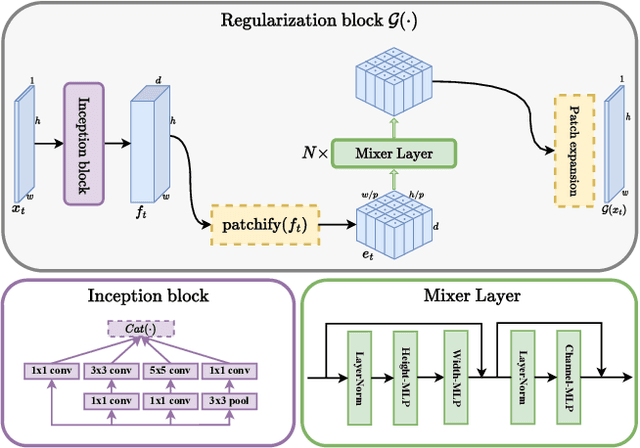Maï K. Nguyen
UnWave-Net: Unrolled Wavelet Network for Compton Tomography Image Reconstruction
Jun 05, 2024Abstract:Computed tomography (CT) is a widely used medical imaging technique to scan internal structures of a body, typically involving collimation and mechanical rotation. Compton scatter tomography (CST) presents an interesting alternative to conventional CT by leveraging Compton physics instead of collimation to gather information from multiple directions. While CST introduces new imaging opportunities with several advantages such as high sensitivity, compactness, and entirely fixed systems, image reconstruction remains an open problem due to the mathematical challenges of CST modeling. In contrast, deep unrolling networks have demonstrated potential in CT image reconstruction, despite their computationally intensive nature. In this study, we investigate the efficiency of unrolling networks for CST image reconstruction. To address the important computational cost required for training, we propose UnWave-Net, a novel unrolled wavelet-based reconstruction network. This architecture includes a non-local regularization term based on wavelets, which captures long-range dependencies within images and emphasizes the multi-scale components of the wavelet transform. We evaluate our approach using a CST of circular geometry which stays completely static during data acquisition, where UnWave-Net facilitates image reconstruction in the absence of a specific reconstruction formula. Our method outperforms existing approaches and achieves state-of-the-art performance in terms of SSIM and PSNR, and offers an improved computational efficiency compared to traditional unrolling networks.
QN-Mixer: A Quasi-Newton MLP-Mixer Model for Sparse-View CT Reconstruction
Feb 29, 2024



Abstract:Inverse problems span across diverse fields. In medical contexts, computed tomography (CT) plays a crucial role in reconstructing a patient's internal structure, presenting challenges due to artifacts caused by inherently ill-posed inverse problems. Previous research advanced image quality via post-processing and deep unrolling algorithms but faces challenges, such as extended convergence times with ultra-sparse data. Despite enhancements, resulting images often show significant artifacts, limiting their effectiveness for real-world diagnostic applications. We aim to explore deep second-order unrolling algorithms for solving imaging inverse problems, emphasizing their faster convergence and lower time complexity compared to common first-order methods like gradient descent. In this paper, we introduce QN-Mixer, an algorithm based on the quasi-Newton approach. We use learned parameters through the BFGS algorithm and introduce Incept-Mixer, an efficient neural architecture that serves as a non-local regularization term, capturing long-range dependencies within images. To address the computational demands typically associated with quasi-Newton algorithms that require full Hessian matrix computations, we present a memory-efficient alternative. Our approach intelligently downsamples gradient information, significantly reducing computational requirements while maintaining performance. The approach is validated through experiments on the sparse-view CT problem, involving various datasets and scanning protocols, and is compared with post-processing and deep unrolling state-of-the-art approaches. Our method outperforms existing approaches and achieves state-of-the-art performance in terms of SSIM and PSNR, all while reducing the number of unrolling iterations required.
 Add to Chrome
Add to Chrome Add to Firefox
Add to Firefox Add to Edge
Add to Edge